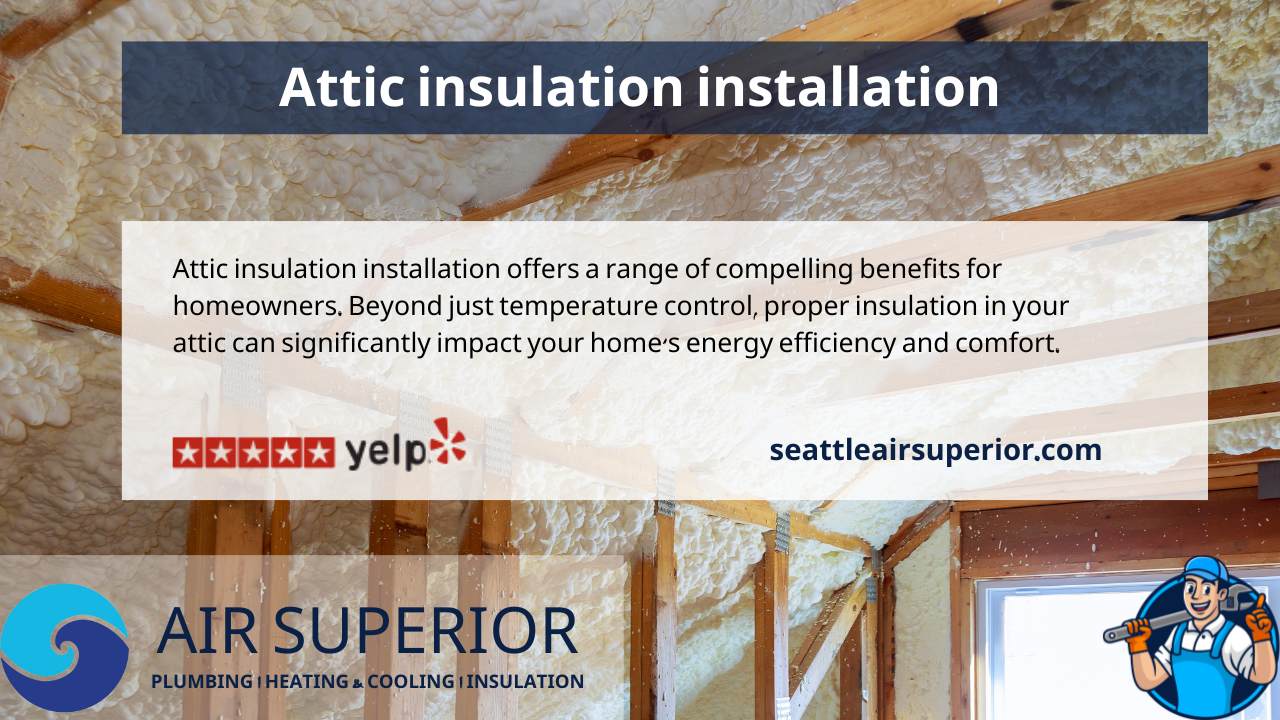
Home » Attic insulation installation
Attic insulation installation offers a range of compelling benefits for homeowners. Beyond just temperature control, proper insulation in your attic can significantly impact your home’s energy efficiency and comfort.
By creating a thermal barrier, attic insulation prevents heat from escaping during the colder months and keeps it out during the hotter months. This leads to reduced energy consumption, lower utility bills, and a more consistent indoor environment year-round.
Moreover, a well-insulated attic also contributes to the longevity of your roofing materials by minimizing temperature-related wear and tear. Understanding the importance of attic insulation and choosing the right type is crucial to optimizing these advantages.
The attic is a critical area in terms of heat exchange within a home.
There are several types of attic insulation available, each with its own set of pros and cons.
The choice of insulation depends on factors like your budget, the climate you live in, and the existing structure of your attic.
Looking for old insulation removal? start here >>
When considering attic insulation installation, cost-effectiveness is a significant consideration. Fiberglass insulation, due to its affordability and relatively straightforward installation process, is often considered one of the most cost-effective options. It provides reasonable insulation value while being widely available.
Cellulose insulation, although slightly more expensive than fiberglass, offers better thermal performance and is an eco-friendly choice. Ultimately, the most cost-effective choice depends on your budget, long-term energy savings goals, and the specific conditions of your attic.
The costs associated with attic insulation installation can vary based on factors such as the type of insulation, the size of your attic, and the complexity of the installation process.
These estimates include both materials and labor.
The decision of whether to install attic insulation on the attic roof or floor depends on the type of attic you have and your specific goals. In a traditional attic, insulation is usually installed on the attic floor.
This approach helps maintain a consistent indoor temperature by preventing heat from escaping or entering the living spaces below. However, in some cases, it might be beneficial to insulate the underside of the roof instead.
This is common in finished or conditioned attics, where temperature control is essential. Roof insulation can create a conditioned space, making it more suitable for storage or as an additional living area.
Ultimately, the choice between roof and floor insulation depends on your intended use of the attic space, climate considerations, and budget constraints. Consulting with a professional insulation contractor can help you make the right decision for your home.
Choosing the right attic insulation installation contractor is crucial to ensuring a successful and effective insulation project.
By comparing quotes and asking the right questions, you can make an informed decision and hire a contractor who can deliver high-quality attic insulation installation.
Installing insulation in an attic ceiling involves several steps to ensure optimal effectiveness.
Before beginning attic insulation installation, proper preparation is key to achieving the best results. Start by inspecting your attic for any existing insulation, water damage, or mold growth. Address any issues before proceeding with new insulation.
Clear the attic of any stored items to provide ample space for the installation process. If necessary, seal any air leaks, gaps, or cracks in the attic structure.
This step helps prevent energy loss and ensures that the insulation works efficiently. If you’re installing insulation on the attic floor, ensure that it’s clean and free from debris. If insulating the roof, check for proper ventilation to prevent moisture buildup.
Taking the time to thoroughly prepare your attic sets the stage for a successful insulation installation, enhancing your home’s energy efficiency and overall comfort.
The process of attic insulation installation involves several key steps to guarantee a well-executed and efficient project.
A professional contractor will follow industry best practices to create an airtight and effective thermal barrier in your attic, contributing to improved energy efficiency and indoor comfort.
When seeking top-notch attic insulation installation services, Seattleairsuperior stands out as a reliable and reputable choice. With years of experience in the industry, our team of experts is well-versed in all aspects of attic insulation.
We offer a wide range of insulation options to suit your specific needs. By choosing Seattleairsuperior, you’re opting for professionalism, expertise, and a dedication to delivering superior attic insulation solutions that stand the test of time. Experience the difference that a well-insulated attic can make in your home with Seattleairsuperior.


With A 5 stars service 12 years in business 0 complaints Satisfaction guarantee. The client enjoy the benefit of one way stop. I fix 99% of the problems. I like what I do and I would like to share my knowledge and skills with my clients and provide top service.
